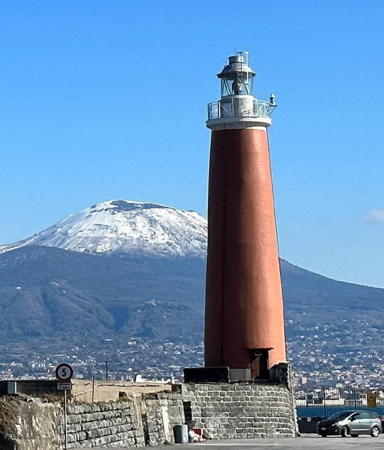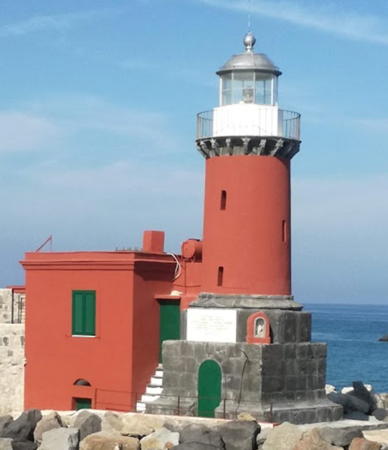Most of Italy (officially the Italian Republic, Repubblica Italiana in Italian) occupies a long peninsula in the Mediterranean Sea, with the Adriatic and Ionian Seas on the east and the Ligurian and Tyrrhenian Seas to the west; the country also includes the Mediterranean's two largest islands, Sicily and Sardinia, and many smaller islands. With this geography Italy has a very long coastline reckoned by geographers at about 7600 km (4722 mi). Guarding this coast are many lighthouses; the Directory lists more than 400.
Italy is divided into 20 regions (regioni), many of them well known outside the country in their own right. This page includes the lighthouses of the two Italian regioni of Campania and Lazio (also called Latium). Campania is the region surrounding Naples and Lazio is the region surrounding Rome. Historically Lazio was ruled directly by the Pope as one of the Papal States. Campania was ruled for many years by the Kings of Naples, monarchs of the House of Bourbon. In 1816, following the Napoleonic wars, Campania was included with Sicily in a Bourbon state called the Kingdom of the Two Sicilies. During Italy's unification the Kingdom of the Two Sicilies was incorporated in the new Kingdom of Italy in 1861. Lazio remained under papal control until it was conquered by the Kingdom of Italy in 1870.
Both Campania and Lazio face southwest on the Tyrrhenian Sea, the portion of the Mediterranean Sea between the Italian Peninsula and the islands of Sardinia and Corsica.
The Italian word for a lighthouse is faro, plural fari. This name is usually reserved for the larger coastal lights; smaller beacons are called fanali. In Italian isola is an island, isolotto is an islet, secca is a shoal, cabo is a cape, punta is a point of land, baia is a bay, stretto is a strait, fiume is a river, and porto is a harbor.
Aids to navigation in Italy are operated and maintained by the Italian Navy's Servizio dei Fari e del Segnalamento Marittimo (Lighthouse and Maritime Signal Service). Lighthouse properties are naval reservations, generally fenced and closed to the public.
ARLHS numbers are from the ARLHS World List of Lights. EF numbers are from the Italian Navy's light list, Elenco Fari. Admiralty numbers are from volume E of the Admiralty List of Lights & Fog Signals. U.S. NGA List numbers are from Publication 113.

Capo Circeo Light, San Felice Circeo, May 2025
photo copyright Capt. Peter Mosselberger; used by permission














